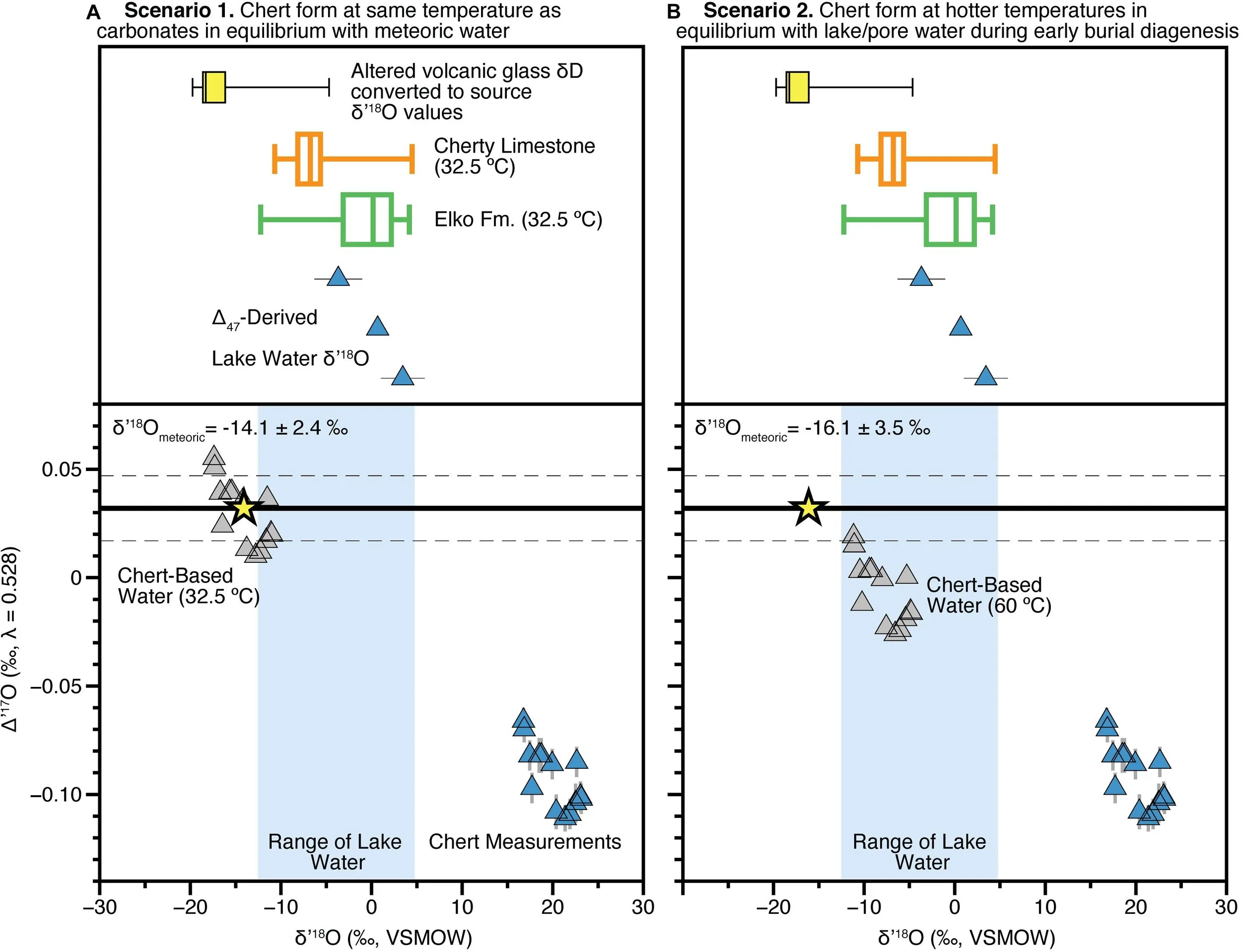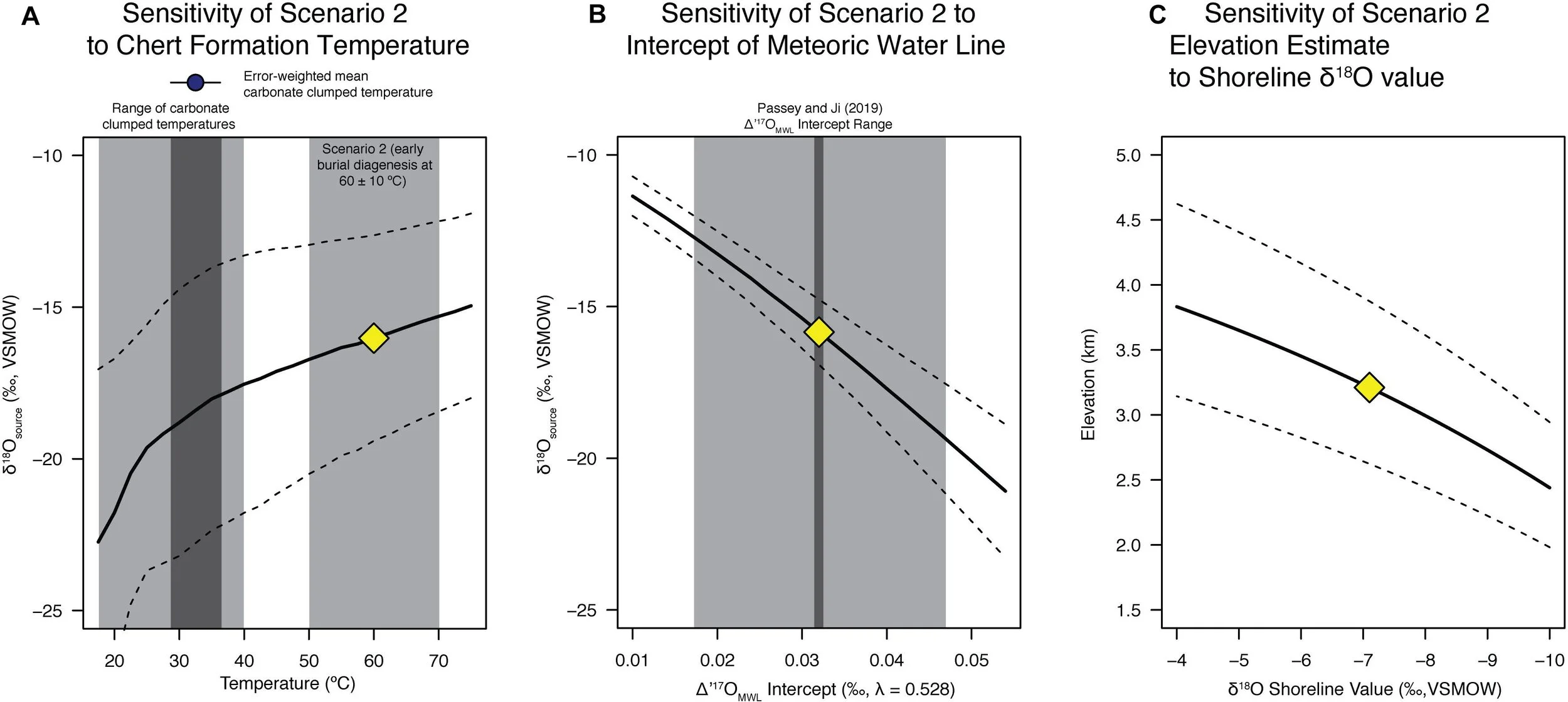Seeing through the evaporation effects on water δ18O
Sedimentary lake deposits from the Eocene of the western. U.S. can serve as archives of past tectonics because oxygen isotopes (δ18O) in authigenic minerals can reflect past rainfall δ18O, which tends to decrease with elevation. However, in many lakes the progressive loss of water via evaporation increases δ18O, perhaps masking the elevation signal. Fortunately, evaporation also impacts δ17O which, together with δ18O, makes up the “triple oxygen” isotope system (Δ17O). By measuring Δ17O in lacustrine sediments (here, chert) it is therefore possible to account for evaporation and estimate the δ18O of precipitation falling into the lake.
Estimating precipitation δ18O and Eocene elevation
We use the “back-projection” model of Passey & Ji (2019) to help estimate past precipitation δ18O. The model simulates data in δ18O-Δ17O space, intersecting the Meteoric Water Line at the “un-evaporated” δ18O value. New carbonate clumped isotope data helps us compare the lake-water δ18O reconstructed from carbonates and cherts. We then use the adiabatic uplift model of Rowley et al., (2001) to estimate paleo-evolution δ18O constraint.


